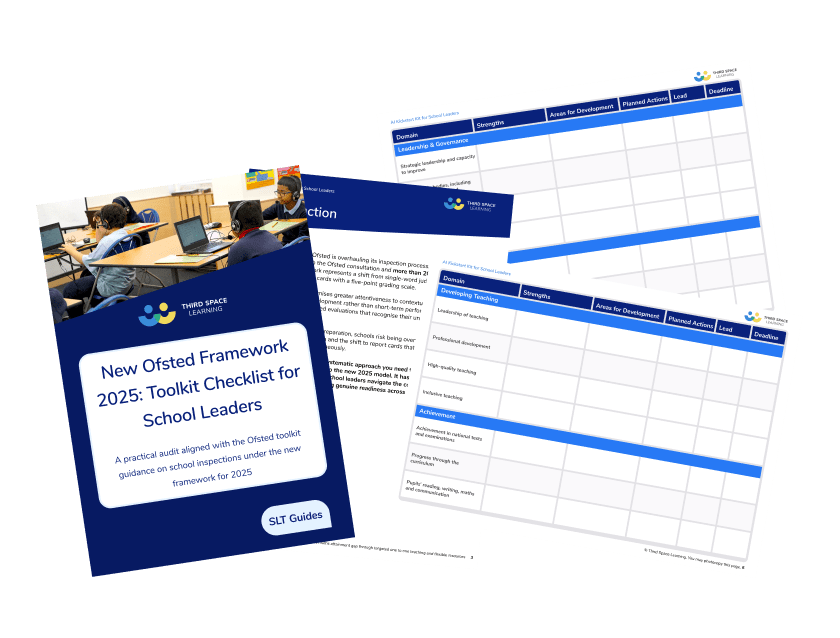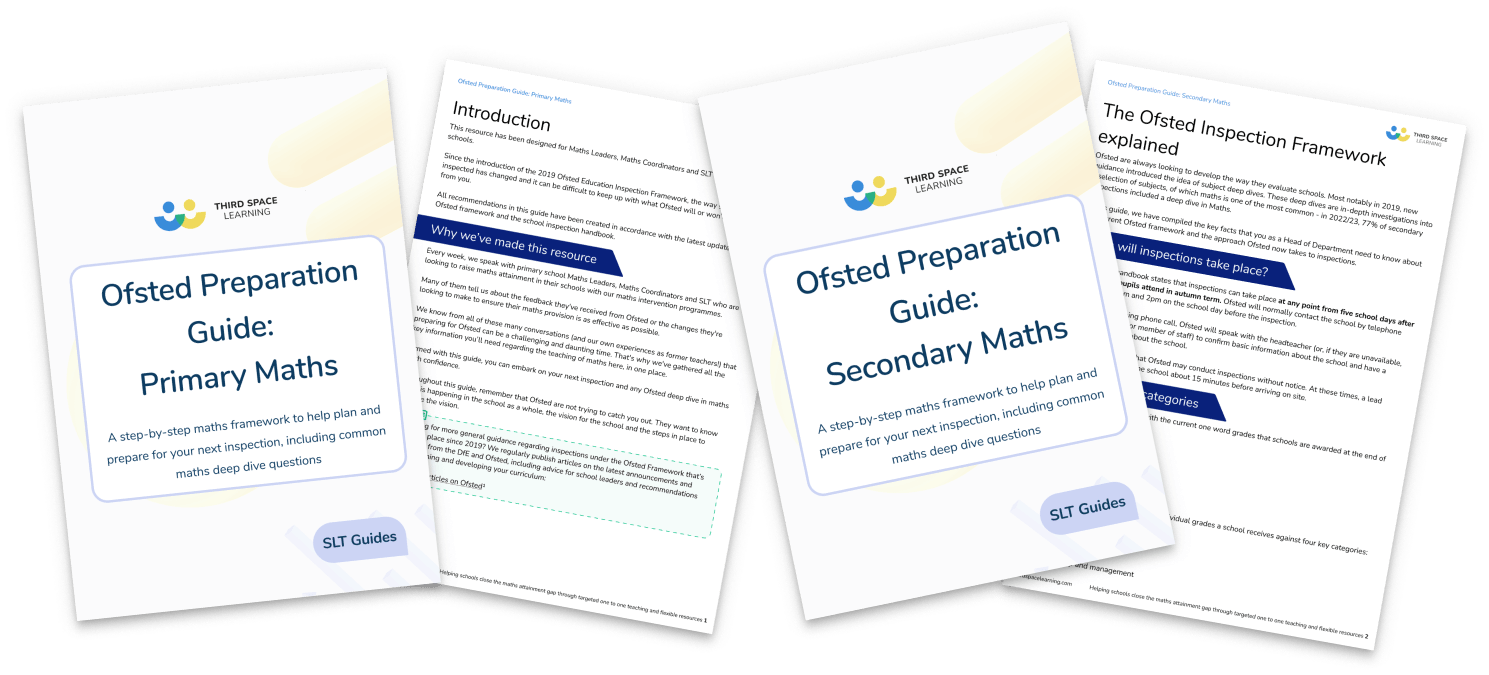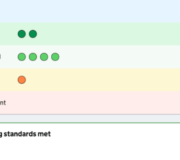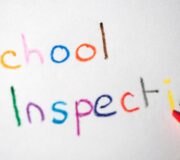Ready To Progress? 9 Things You Should Know About The NCETM Mathematics Guidance As You Plan Your Curriculum Prioritisation
A detailed look at the ready-to-progress criteria and non-statutory mathematics guidance in the context of the KS1 and KS2 maths curriculum and mastery approach to maths.
In July 2020, as schools were starting to emerge from Lockdown 1 and opening to specific year groups on-site, the Department for Education published a new document. This was imaginatively titled ‘Mathematics guidance: key stages 1 and 2’.
The aims of this document (and its associated and extensive supplementary resources) were to:
- bring greater coherence to the national curriculum by exposing core concepts in the national curriculum and demonstrating progression from year 1 to year 6;
- summarise the most important knowledge and understanding within each year group and important connections between these mathematical topics.
- Prioritising the maths curriculum
- What is the mathematics guidance and what support is available?
- What are the ready-to-progress criteria?
- The mathematics guidance in coronavirus times
- A replacement curriculum?
- What you need to know
- Different language
- Limited links to the national curriculum
- Year group switches
- Look at what’s left out
- 9 key points
- All change!
Ofsted Preparation Guides
Prepare for your next inspection with this step-by-step math framework. Includes checklists and questions for an Ofsted deep dive in math.
Download Free Now!Prioritising the maths curriculum
Now, as we emerge from another period of lockdown and hybrid online learning, teachers are again being encouraged to seek out the guidance as part of their curriculum prioritisation in teaching maths for the remainder of the spring term and into the summer term.
This is because the maths guidance deliberately focuses on a few core concepts from each year that the DFE and NCETM deem to be key stepping stones and prerequisites for progressing to the next stage in maths (the ready-to-progress criteria). Essentially, it helps us to slim down the curriculum.
As Debbie Morgan says in her video, it’s not a normal year and you can’t expect to progress with your maths teaching as you would usually with your class. Her mantra is very much to focus on what the children know and adapt your planning around that.
- Don’t try to teach everything
- Don’t teach anything new or test children
- Build confidence and firm foundations for future
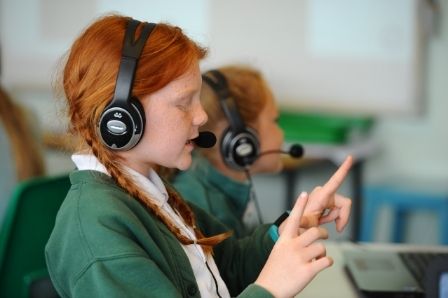
So with that in mind, let’s look at what you can learn from the maths guidance and the ways in which it intersects with the national curriculum guidelines to streamline your own teaching and planning for the rest of this academic year.
What is the mathematics guidance and what support is available?
To start with, this is where you’ll find the key information referred to in this article:
From the DFE (working with NCETM)
- National Curriculum Mathematics
- Teaching Mathematics in Primary School
- Mathematics Guidance: Key Stages 1 and 2
According to the DFE, the mathematics guidance documents identify the most important conceptual knowledge and understanding that pupils need as they progress from year 1 to year 6.
The concepts are referred to as ready-to-progress criteria and provide a coherent, linked framework to support pupils’ mastery of the primary mathematics curriculum.
Each chapter begins with a table that shows how each ready-to-progress criterion for that year group links to pupils’ prior knowledge and future applications. Each year-group chapter then provides:
- teaching guidance for each ready-to-progress criterion, including core mathematical representations;
- language structures and discussion of connections to other criteria;
- example assessment questions for each ready-to-progress criterion;
- guidance on the development of calculation and fluency.
From the NCETM
- NCETM Support for the Mathematics Guidance
- Exemplification for each of the ready to progress criteria
What NCETM have done is create a PowerPoint to exemplify every ready-to-progress criteria. This means 79 PowerPoints with links to relevant resources and pupil-facing activities.
One important thing to note about the ready-to-progress criteria is that they are intended as goals for the end of the year.

Meet Skye, the voice-based AI tutor making maths success possible for every student.
Built by teachers and maths experts, Skye uses the same pedagogy, curriculum and lesson structure as our traditional tutoring.
But, with more flexibility and a lower cost, schools can scale online maths tutoring to support every student who needs it.
Watch Skye in actionWhat are the ready-to-progress criteria?
The document uses the term ‘ready-to-progress criteria’ to refer to the most important knowledge and understanding referred to above. The authors are keen to point out that the guidance does not address the whole of the primary curriculum, but only the areas that have been identified as a priority.
The ready-to-progress criteria have been selected in order to develop pupils’ mastery of the primary maths curriculum and, if all criteria are taught and met, pupils will be able to more easily access many of the elements of the curriculum that are not covered by this guidance.
Another intended key feature of the document is that it provides a coherent, linked framework making links within year groups and across year groups.
The 79 criteria are split across the year groups into the following core topics: Number and Place Value, Number Facts, Addition and Subtraction, Multiplication and Division, Fractions, Geometry.
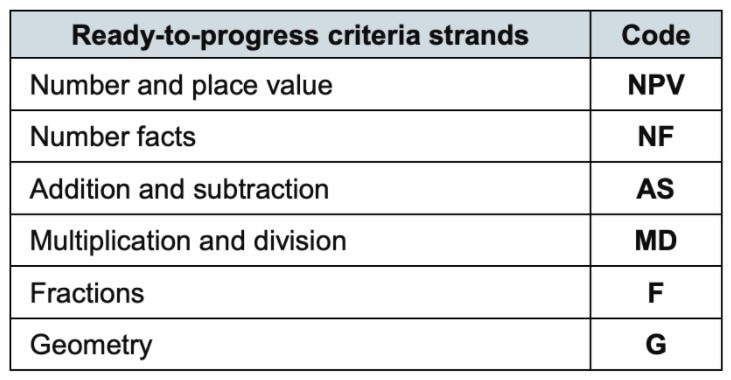
The mathematics guidance in coronavirus times
Although the NCETM initially recommended using their ready-to-progress criteria with small groups of pupils to support review, practice, and consolidation, it’s clear now that they have wider relevance. The obvious implication is that these ready-to-progress criteria might be taught over and above other curriculum objectives, providing teachers with a possible starting point for their planning and teaching in the 2020-2021 academic year.
A replacement curriculum?
Indeed, the document states that teaching time can be weighted towards the ready-to-progress criteria. The question is, can it really? For example, are there any key objectives that seem to be missing from this new guidance that other teachers might believe to be key to greater understanding? Is it possible that prioritising the objectives outlined in this document could make up the majority of time spent teaching maths?
With statements such as ‘the guidance in this document will support planning for all SEND pupils by highlighting the most important concepts within the national curriculum so that teaching and targeted support can be weighted towards these‘, is it legitimate to ask such questions as ‘is the whole curriculum really necessary then?’?
What you need to know
With the vision of a priority maths curriculum in mind, I spent some time analysing the new maths guidance to pull out the key points that I thought were relevant and important for my team and other maths leaders and primary school teachers.
The way I did this was to map out the new ready-to-progress criteria against the 2014 national curriculum objectives for maths. Here’s a summary of what you notice as soon as you do this, and then following that is more detail on the 9 key points you should know.
Different language
The ready-to-progress criteria use different language from the national curriculum objectives.
The first thing to notice is that the objectives in the 2020 guidance are not copied, or cherry-picked, directly from existing objectives in the national curriculum. There is not a single ready-to-progress criterion which has the exact same wording as any national curriculum objective.
This made my efforts to make links between the two quite a difficult task – if someone else attempted to do the same, they may come up with different links, such are the differences between the two.
So, this new document is not simply a slimmed-down version of the 2014 curriculum – it is something almost entirely different. School leaders and teachers expecting to be able to easily adapt current plans in light of this (non-statutory) guidance will need to do a bit more reading, thinking and planning before being able to move forward.
Some of the new ready-to-progress criteria can be mapped fairly easily onto the national curriculum objectives. For example, the year 2 Geometry Properties of Shape objectives in the 2014 national curriculum are all covered by either year 1 or year 2 ready-to-progress criteria for Geometry.
Limited links to the national curriculum
Several of the ready-to-progress criteria are entirely new: they are not covered at all in the national curriculum objectives.
Some of this additionality concerns the use of new, more technical mathematical language, whereas other criteria outline mathematical concepts which have not previously featured explicitly in the national curriculum.
Many of these changes will actually feel familiar to teachers, particularly those who have been in tune with the work of NCETM, Mathematics Mastery, White Rose Maths, Maths No Problem, and other proponents of the mastery-based approach, which is only really mentioned in passing in the 2014 national curriculum document.
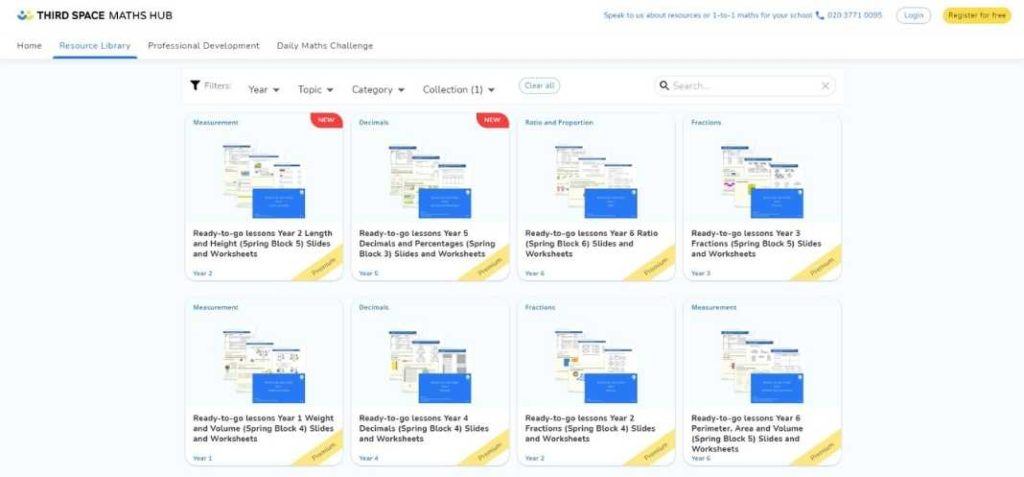
Although many teachers will already be familiar with what appears to be new content, some of the ready-to-progress criteria do represent the need to change what is taught (if schools decided to follow the guidance), and how it is taught.
Thankfully, the guidance doesn’t skimp on how these additions might be navigated.
Year group switches
There are some objectives in the new guidance which have more in common with objectives from both higher and lower year groups. Just as the 2014 national curriculum itself brought some objectives forward and pushed others back, it would seem that the 2020 guidance does the same.
These changes could be the ones that cause the most consternation as 6 years’ worth of work on developing planning and teaching may need to change to keep up with these latest guidelines. These changes could also prove difficult if schools don’t take a staggered approach to implement these new ready-to-progress criteria, introducing the changes a year at a time.
Look at what’s left out
An obvious point such as this is the whole purpose of guidance, but still a point worth making; one aspect of this document that may raise eyebrows is not what is included, but what is left out.
Many objectives and areas of mathematical learning that are present in the 2014 curriculum, and that form much of the learning that goes on during a school year, have been relegated to the status of being seen as less important in developing children’s mastery.
So here, in greater detail, are the 9 key points to note when assessing the suitability of the ready-to-progress criteria for planning, teaching and learning in your school.
9 key points
1. There are some striking language changes and new words we should be using if we’re not already
While many of the new ready-to-progress criteria can be matched, at least in part, to the national curriculum objectives, some seem to be entirely new.
Many of the new criteria showcase new mathematical language – new to official curriculum guidance, but unlikely to be new to anyone who has been teaching a maths mastery curriculum in the last 5 years.
Read more: Primary Maths Dictionary
Examples of newly-added words are:
- compose and decompose;
- partition and partitioning (despite being a word long-used by teachers of maths in primary);
- reason is also used a lot – previously the only mention of reasoning in the NC objectives was in a year 5 shape geometry objective;
- quotitive might be a new one for most of us but it appears twice, once in the year 2 criteria and once in year 3;
- equations are mentioned much more – another newcomer from mastery curricula whereas the only previous mention in the national curriculum was in the year 6 algebra section;
- product;
- complements (referring to number bonds);
- partitive;
- divisors and dividends.
2. New terminology is used to introduce new teaching and learning points
In year 6 Addition and and Subtraction we find two examples of this:
- 6AS/MD–1 Understand that 2 numbers can be related additively or multiplicatively, and quantify additive and multiplicative relationships (multiplicative relationships restricted to multiplication by a whole number).
- 6AS/MD–2 Use a given additive or multiplicative calculation to derive or complete a related calculation, using arithmetic properties, inverse relationships, and place-value understanding.
This is a new departure and example of an increased focus on developing a deeper understanding of number, and the relationships between numbers, which serve to underpin much of the wider maths curriculum.
3. Some groups of objectives from the national curriculum remain entirely untouched by the new guidance
Large parts of the national curriculum do not merit a single mention in the new maths guidance. This is particularly striking at KS1.
In the guidance for year 1, there are no criteria relating to objectives from the following sections of the national curriculum: Number – multiplication and division, Number – fractions, Measurement, Geometry – position and direction.
In the guidance for year 2, there are no links to objectives from: Number – fractions, Measurement, Geometry – position and direction, Statistics.
Some of the omissions represent very significant areas of mathematical learning, especially the direct and specific application of the subject to real life. For example, the fact that the measurement objectives do not feature in the year 1 or 2 ready-to-progress criteria sees the potential demotion of learning about money, time and standard units of measurement for mass and length.
4. Several ready-to-progress criteria combine national curriculum objectives within year groups
Some of the ready-to-progress criteria bridge the gap between different areas of the national curriculum.
An example of this is from year 3 Number and Place Value:
- 3NPV–4 Divide 100 into 2, 4, 5 and 10 equal parts, and read scales/number lines marked in multiples of 100 with 2, 4, 5 and 10 equal parts.
This is a precursor to further decimal work, but is placed under the number and place value heading. This particular criterion appearing in the year 3 ready-to-progress criteria will be welcomed by upper key stage 2 teachers as it is foundational for work on fractions, decimals and percentages but, prior to this guidance, has not been a common part of what children learn before.
5. Some ready-to-progress criteria combine related national curriculum objectives across year groups
Other ready-to-progress criteria also bridge the gap between related content in two consecutive year groups.
An example of this is from year 5 Number and Place Value:
- 5NPV–1 Know that 10 tenths are equivalent to 1 one, and that 1 is 10 times the size of 0.1. Know that 100 hundredths are equivalent to 1 one, and that 1 is 100 times the size of 0.01. Know that 10 hundredths are equivalent to 1 tenth, and that 0.1 is 10 times the size of 0.01.
This links objectives in the year 4 fractions and decimals section to objectives in the same section of the year 5 curriculum. Moreover, very specific knowledge is outlined, in contrast to more open-ended objectives in the NC.
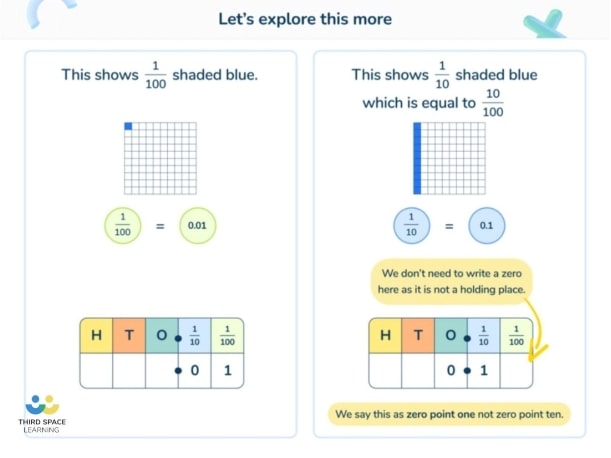
6. In some cases the ready-to-progress criteria actually meet a lower bar than the national curriculum had set
Here’s an example from year 3 Number Facts:
- 3NF–1 Secure fluency in addition and subtraction facts that bridge 10, through continued practice.
This acknowledges that there are some things children learn in KS1 which ought never to be given up on as they are foundational to many other areas of maths, having applications and uses beyond themselves.
Example from year 3 Addition and Subtraction:
- 3AS–1 Calculate complements to 100.
Although this is a year 3 ready-to-progress criterion, it matches best to the year 2 objective from the national curriculum: ‘derive and use related facts up to 100’.
If the new guidance is followed, this removes the pressure for year 2 children to master this skill, instead freeing them up to really focus on, say, learning the complements to 10.
Some ready-to-progress criteria map even more obviously to material from the previous year group. This perhaps suggests that although those concepts should be taught earlier, it is not until later on that they need to be mastered, and indeed, that those objectives should not be seen as done and dusted once children have left that year group.
Here’s another example from year 3 Addition and Subtraction:
- 3AS–3 Manipulate the additive relationship: Understand the inverse relationship between addition and subtraction, and how both relate to the part-part-whole structure. Understand and use the commutative property of addition, and understand the related property for subtraction.
This maps directly onto year 2 objectives from the national curriculum: ‘show that addition of 2 numbers can be done in any order (commutative) and subtraction of 1 number from another cannot; recognise and use the inverse relationship between addition and subtraction and use this to check calculations and solve missing number problems’.
In the year 5 Fractions ready-to-progress criteria, it is made very clear that multiplication tables must continue to be practised after year 4 and the multiplication tables check.
- 5NF–1 Secure fluency in multiplication table facts, and corresponding division facts, through continued practice.
Here are two further year 5 number and place value examples of consolidation and mastery of a concept that differs from the national curriculum.
- 5NPV–3 Reason about the location of any number with up to 2 decimals places in the linear number system, including identifying the previous and next multiple of 1 and 0.1 and rounding to the nearest of each.
This corresponds best to the year 4 objective ‘compare numbers with the same number of decimal places up to 2 decimal places’. However, the last part regarding rounding corresponds to a year 5 objective. The middle part, which includes identifying the previous and next multiple of 1 and 0.1, appears to be a completely new addition.
- 5NPV–4 Divide 1 into 2, 4, 5 and 10 equal parts, and read scales/number lines marked in units of 1 with 2, 4, 5 and 10 equal parts.
This is interesting as it takes in fraction work, which in the national curriculum begins in year 2 (halves and quarters) and year 3 (tenths). Although, the new guidance specifies that fifths be learned, which the national curriculum does not do.
7. Inevitably a few of the ready-to-progress criteria raise the bar
Some of the new ready-to-progress criteria correspond better to content that comes at a later stage in the 2014 national curriculum. There are only a few examples of this in the new guidance.
Take this year 4 Number Facts ready-to-progress criterion:
- 4NF–2 Solve division problems, with two-digit dividends and one-digit divisors, that involve remainders, and interpret remainders appropriately according to the context is.
It is mostly closely serviced by this from the year 5 national curriculum: ‘divide numbers up to 4 digits by a one-digit number using the formal written method of short division and interpret remainders appropriately for the context which is from the year 5 curriculum’.
Another example of this is the year 1 Geometry criterion:
- 1G–2 Compose 2D and 3D shapes from smaller shapes to match an example, including manipulating shapes to place them in particular orientations.
This corresponds and adds to both the year 2 national curriculum objective ‘identify 2-D shapes on the surface of 3-D shapes, [for example, a circle on a cylinder and a triangle on a pyramid]’ and the year 3 national curriculum objective ‘draw 2-D shapes and make 3-D shapes using modelling materials; recognise 3-D shapes in different orientations and describe them’.
The last example to be found is this year 4 Number Facts criterion:
- 4NF–2 Solve division problems, with two-digit dividends and one-digit divisors, that involve remainders, and interpret remainders appropriately according to the context.
This corresponds to the year 5 national curriculum objective ‘divide numbers up to 4 digits by a one-digit number using the formal written method of short division and interpret remainders appropriately for the context’ but suggests that children should get to grips with written methods of division a year earlier.
8. There has been some welcome simplification of expectations in the ready-to-progress criteria
Some of the new ready-to-progress criteria put more succinctly that which long and wordy objectives from the national curriculum try to outline.
For example, this year 3 Number Facts criterion effectively summarises several statements in the NC, particularly ones that begin with the words ‘solve problems’:
- 3NF–3 Apply place-value knowledge to known additive and multiplicative number facts (scaling facts by 10).
Other language changes actually clarify the meaning of the original national curriculum objectives and make them simpler to understand.
For example, in year 3 Addition and Subtraction, this criterion does away with the language of ‘formal written methods’ that the national curriculum uses and instead simply specifies the exact kind of formal written method that children should learn.
- 3AS–2 Add and subtract up to three-digit numbers using columnar methods.
9. Some of the ready-to-progress criteria appear to be entirely new concepts altogether
Some criteria don’t map to anything in the national curriculum at all. However, it’s likely that they are mostly ones that teachers have taught previously as precursor concepts (even if they aren’t mentioned in the national curriculum) in order to successfully teach other concepts.
Examples of this is are from year 3 and year 4 Number and Place Value:
- 3NPV–4 Divide 100 into 2, 4, 5 and 10 equal parts, and read scales/number lines marked in multiples of 100 with 2, 4, 5 and 10 equal parts.
- 4NPV–4 Divide 1,000 into 2, 4, 5 and 10 equal parts, and read scales/number lines marked in multiples of 1,000 with 2, 4, 5 and 10 equal parts.
Previously, teachers will have taught these ideas when teaching scales and number lines rather than teaching the division part separately in another unit.
Some whole strands are new and bring together many aspects of the maths curriculum in a logical way. For example, the NPV-4 ready-to-progress criteria that run from year 3 to year 6 are difficult to match to any of the old national curriculum objectives.
All change!
In my opinion, this mathematics guidance, with its slimmed-down set of criteria compared to the national curriculum, represents a move forward in the teaching of primary mathematics. Whilst we may now be comfortable with the 2014 curriculum, there are many who would agree that it isn’t adequate in developing children who have mastered mathematics. Could this forward motion now see maths taught more effectively and children learning greater mastery of the content represented in this new guidance?
The fact that the guidance document provides in-depth examples of how to teach each of the new ready-to-progress criteria also points towards more successful delivery than perhaps was provided when the national curriculum was new.
If you haven’t already done so, I encourage you to take the opportunities provided by the COVID-19 pandemic to strategically reduce the amount of new content you teach over the coming weeks. And let these new ready-to-progress criteria and the NCETM’s accompanying planning and exemplification materials provide the structure for it.
Read more: Primary Maths Strategies Proven To Improve Progress
DO YOU HAVE STUDENTS WHO NEED MORE SUPPORT IN MATHS?
Skye – our AI maths tutor built by teachers – gives students personalised one-to-one lessons that address learning gaps and build confidence.
Since 2013 we’ve taught over 2 million hours of maths lessons to more than 170,000 students to help them become fluent, able mathematicians.
Explore our AI maths tutoring or find out about school tutors for your school.
